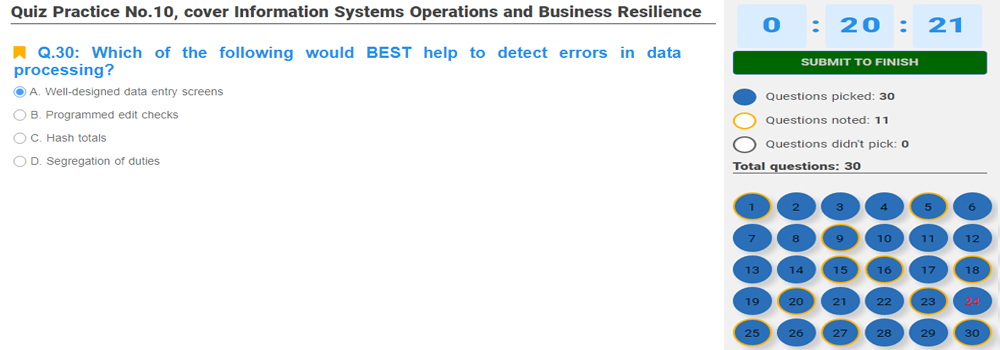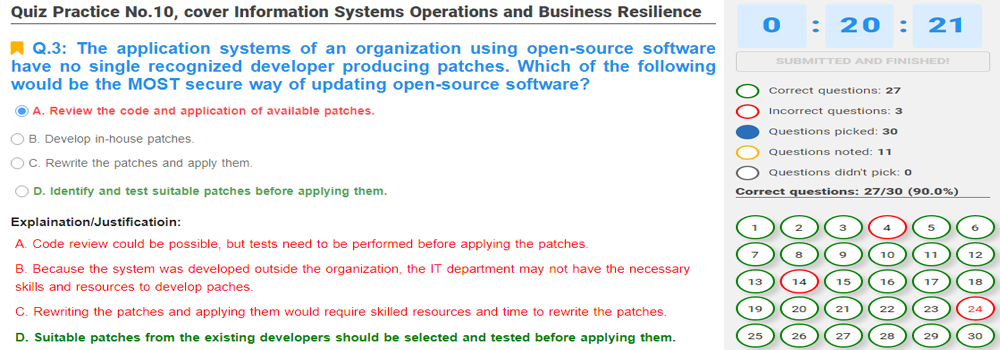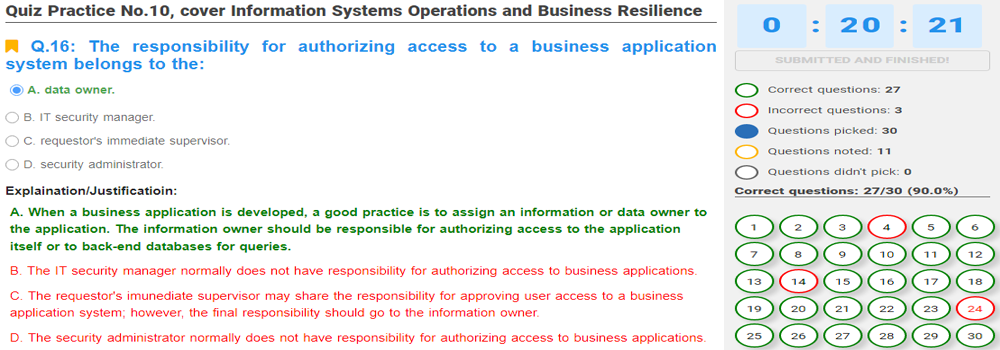[Study Guide Review, Updated JULY, 2024] Certified in Risk and Information Systems Control Cert code: CRISC, Questions of the exam: 150, Minutes of the exam: 240, Correct to pass: 57%.
[Study Guide Review, Updated JUNE, 2024] Certified in Risk and Information Systems Control Cert code: CRISC, Questions of the exam: 150, Minutes of the exam: 240, Correct to pass: 57%.
[Study Guide Review, Updated MAY, 2024] Certified in Risk and Information Systems Control Cert code: CRISC, Questions of the exam: 150, Minutes of the exam: 240, Correct to pass: 57%.
[Study Guide Review, Updated MARCH, 2024] Certified in Risk and Information Systems Control Cert code: CRISC, Questions of the exam: 150, Minutes of the exam: 240, Correct to pass: 57%.
[Study Guide Review, Updated JANUARY, 2024] Certified in Risk and Information Systems Control Cert code: CRISC, Questions of the exam: 150, Minutes of the exam: 240, Correct to pass: 57%.
SOME NOTES ABOUT CERTIFIED IN RISK AND INFORMATION SYSTEMS CONTROL:
Certified in Risk and Information Systems Control [CRISC] is an important and mandatory certification on your path to becoming an expert in your field.
To get this certificate, you need to firmly and confidently grasp the content listed below. Then, you need to pass the exam directly on ISACA's system. This exam has a duration of 240 minutes, with 150 questions. You need to answer correctly at least 57% of the total questions on the exam.
Below are the contents that you need to grasp firmly and confidently before registering to take the exam on ISACA's system:
1. IT Risk Identification
1.1. Risk Capacity, Risk Appetite and Risk Tolerance
1.2. Risk Culture and Communication
1.3. Elements of Risk
1.4. Information Security Risk Concepts and Principles
1.5. The IT Risk Strategy of the Business
1.6. IT Concepts and Areas of Concern for the Risk Practitioner
1.7. Methods of Risk Identification
1.8. IT Risk Scenarios
1.9. Ownership and Accountability
1.10. The IT Risk Register
1.11. Risk Awareness
1.12. Summary Endnotes
2. IT Risk Assessment
2.1. Risk Assessment Techniques
2.2. Analyzing Risk Scenarios
2.3. Current State of Controls
2.4. Changes in the Risk Environment
2.5. Project and Program Management
2.6. Risk and Control Analysis
2.7. Risk Analysis Methodologies
2.8. Risk Ranking
2.9. Documenting Risk Assessments
2.10. Summary Endnotes
3. Risk Response and Mitigation
3.1. Aligning Risk Response With Business Objectives
3.2. Risk Response Options
3.3. Analysis Techniques
3.4. Vulnerabilities Associated With New Controls
3.5. Developing a Risk Action Plan
3.6. Business Process Review Tools and Techniques
3.7. Control Design and Implementation
3.8. Control Monitoring and Effectiveness
3.9. Types of Risk
3.10. Control Activities, Objectives, Practices and Metrics
3.11. Systems Control Design and Implementation
3.12. Impact of Emerging Technologies on Design and Implementation of Controls
3.13. Control Ownership
3.14. Risk Management Procedures and Documentation
3.15. Summary Endnotes
4. Risk and Control Monitoring and Reporting
4.1. Key Risk Indicators
4.2. Key Performance Indicators
4.3. Data Collection and Extraction Tools and Techniques
4.4. Monitoring Controls
4.5. Control Assessment Types
4.6. Results of Control Assessments
4.7. Changes to the IT Risk Profile
GOODLUCK TO YOU!!!




